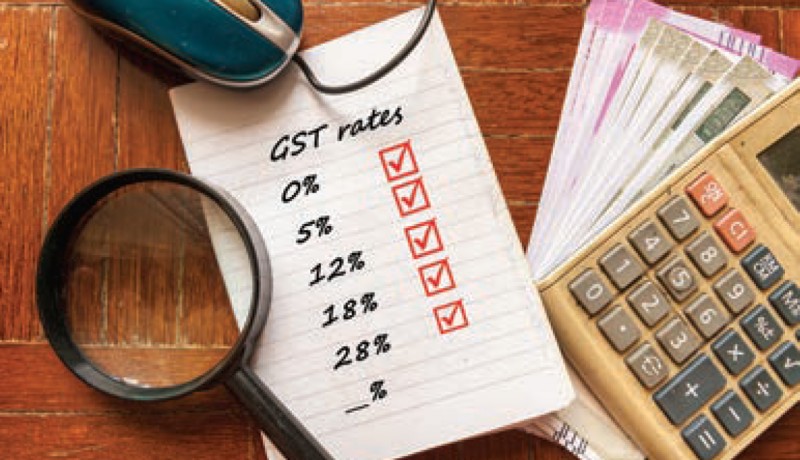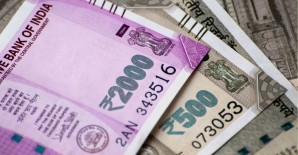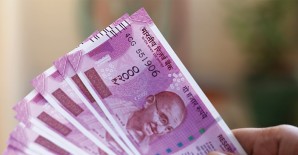
Money

Economist Priya Desai decodes GST and discusses its ramifications for silvers
A penchant for wordplay is the hallmark of Prime Minister Narendra Modi’s speeches. He jokingly referred to the Goods and Services Tax (GST) rolled out on 1 July in his midnight address as “a Good and Simple Tax”. A few days into the new tax regime, tax experts and economists are waiting to test its goodness; traders and consumers are not finding it simple either.
The jury is still out on this. It will be some time before the entire gamut of consequences and ramifications unravels for various industries, service providers, traders and consumers. Currently, everybody, including silvers, is miffed, wondering whether it is as good and simple a tax as claimed by the Government. While many are unaware of the true implications of this landmark tax reform, those who try to understand it find it confusing and regressive. The traders and buyers of computers wonder why there should be a GST of 14 per cent on a personal computer but 28 per cent on a monitor.
Similarly, my friend who visited a chemist recently found that every strip of medicine she bought cost ₹ 4 more as the GST amounted to 18 per cent in place of 15 per cent for medicines. It seems retailers are still not clear about the slabs. Little wonder then, that my friend dubbed it an unwelcome change that would create a bigger hole in her already threadbare pocket.
What is GST?
GST is a landmark indirect tax reform covering the entire country and its economy. We routinely consume a number of goods and services. For instance, when we enter a graded restaurant to dine, while the menu card shows the prices of various items, the final bill includes VAT and service tax. Now, you will see GST in place of these two taxes. This will happen in case of all goods and services that are covered under the ambit of indirect taxes. GST is a composite tax that will replace all central and state taxes. As the Government says, GST is founded on the concept of ‘One Nation, One Market, and One Tax’. It will be levied on the supply of goods and/or services in India except for the items that have been exempted by law. There is now the central GST (CGST), the state GST (SGST) and an integrated GST (IGST) on every interstate supply of goods and services.
In a nutshell, it is a single tax system for the entire nation, creating a common market for all goods and services. However, it is a concept yet to be fully understood and absorbed for its impact on industries and the Government as well as consumers. In the pre-GST landscape, both the Centre and the states were imposing different taxes. Each state also decided the amount of tax paid on goods; this resulted in a lack of uniformity across the country and multiplicity of taxes paid. The end result was an enormous amount of paperwork, lack of transparency, tax evasion and corruption.
With the implementation of GST, industries will have a cohesive and more efficient market strategy for a more expansive market instead of dealing with individual states of varying sizes and their respective tax structures. Have we forgotten the times when we bought cars in a state other than that of our residence to benefit from a lower tax rate?
As taxes paid by manufacturers, wholesalers and retailers are ultimately passed on to consumers, the latter would stand to benefit as a result of GST. This is because the cascading element in the form of multi-layered taxes is removed. It is hoped that GST will remove unnecessary tax barriers, transform economic and business systems, widen the tax base and increase tax collections. In short, if it works the way it should, it will simplify the tax system.
But all this isn’t going to happen overnight, and it will take some time to iron out the glitches and complications. This race poses hurdles both for users and the Government. This is evident in the extensive and continuous media coverage, high-octane debates, and FAQ advertisement series in print media and online forums.
The common man isn’t adept at understanding the reform of the century and is confused about its impact on his day-to-day purchases and expenditure, and on luxury items bought occasionally. This is why the 40 per cent discount offers from Amazon, Flipkart, Paytm, etc, and promotional offers from Samsung, LG, and Videocon for electronic items attracted hoards of buyers just a few days prior to the GST rollout. An answer to the common man’s anxieties is hidden in the GST tax slabs.
GST slab rates
All goods and services will be taxed under one of the four slabs—5 per cent, 12 per cent, 18 per cent and 28 per cent—depending on where they are purchased. The given table provides some idea of what to expect under the new tax regime.
GST slab rates: A select view
A National Anti-Profiteering Authority under the GST regime would ensure that the person who has registered under the GST will pass on the benefits like tax reduction or input tax credit to the consumer of goods and services.
Impact on silvers
Silvers will continue to feel the pinch till clarity on the issue emerges. Those who depend on fixed deposits for their monthly income have already lost a quarter of their income owing to a major dip in deposit rates; a tax increase through GST implementation can affect silvers in certain areas.
Insurance is a major area affected by GST. Medical insurance as well as life insurance premiums will be adversely affected with an increase of 3 per cent in the tax. The insurance sector will administer a GST rate of 18 per cent. Premium rates keep escalating with advancing age; this new tax hike on the premium will be the last straw. Healthcare services are outside the ambit of GST and silvers can seek comfort in the fact that at least doctor fees will not increase. However, 28 per cent GST on cinema will add to their expenses on entertainment. Travel insurance costs will also rise.
Silvers living in retirement communities will find their maintenance charges and food bills going up as they will be required to pay 18 per cent GST in place of 15 per cent service charge for maintenance and 5-12 per cent for catering compared to the previous 0 per cent. It is estimated that silvers will have to bear an additional payment of ₹ 600 per head. The silver lining: the new senior citizens’ pension scheme launched by the Government called the Pradhan Mantri Vaya Vandana Yojana is exempt from GST.
Live with GST
To conclude, this landmark tax reform is here to stay. There will be hiccups and amendments as GST’s impact on various industries and services is complicated. It will take some time for the currents to calm down. The real impact of the new tax structure will be visible only in the medium to long-term. While the changes are projected to be positive and beneficial to the Indian economy and for the Indian consumer, its short-term impact is not evenly distributed across the sectors and sections of the population.
All considered, silvers are apprehensive about the effects of GST on their expenditure and their ability to bear additional costs. And it will be a major factor to take into consideration while planning any future course of action.
| SLAB RATES | A FEW EXAMPLES OF ITEMS |
| 0% | Daily-use consumer items such as cereals, pulses, dairy produce, fresh meat, fish, fresh vegetables, fruits, etc. |
| 5% | Apparel below ₹ 1,000, packaged food items, footwear below ₹ 500, cream, skimmed milk powder, branded paneer, frozen vegetables, coffee, tea, spices, kerosene, medicines, etc. Transport services (railways, air transport), small restaurants, etc. |
| 12% | Apparel above ₹ 1,000, butter, cheese, ghee, dry fruits in packaged form, fruit juices, frozen meat products, ayurvedic medicines, namkeen, cellphones, services like non-AC restaurants, business-class air travel, etc. |
| 18% | Preserved vegetables, jams, instant food mixes, mineral water and tissues. Telecom services, IT services, financial services, AC hotels that serve liquor, room tariffs between ₹ 2,500 and ₹ 7,500, restaurants inside five-star hotels, etc. |
| 28% | Aerated water, deodorants, shaving creams, paint, hair shampoo, dye, wallpaper, water heater, dishwasher, automobiles and services such as hotels with room tariffs above ₹ 7,500, five-star hotels, cinemas, race clubs, etc. |
Source: Various newspapers and media
The author is an economist based in Mumbai
Photo: 123RF.com Featured in Harmony — Celebrate Age Magazine September 2017
you may also like to read
-
Pension hike
The stage is set for a manifold hike in pension for private-sector employees with the Supreme Court quashing a special….
-
Budget 2019: ‘A big let-down’ for silvers
The verdict is out: Experts Harmony-Celebrate Age spoke to termed Budget 2019 ‘a big let-down’ for silvers. The only saving….
-
Silvers seek sops in health sector in Budget 2019
Relief in the healthcare sector seems to be uppermost in the minds of silvers on the eve of the unveiling….
-
Cheer for pensioners
The Union Government has launched Sampann (system for accounting and management of pension), a pension management software to aid and….







